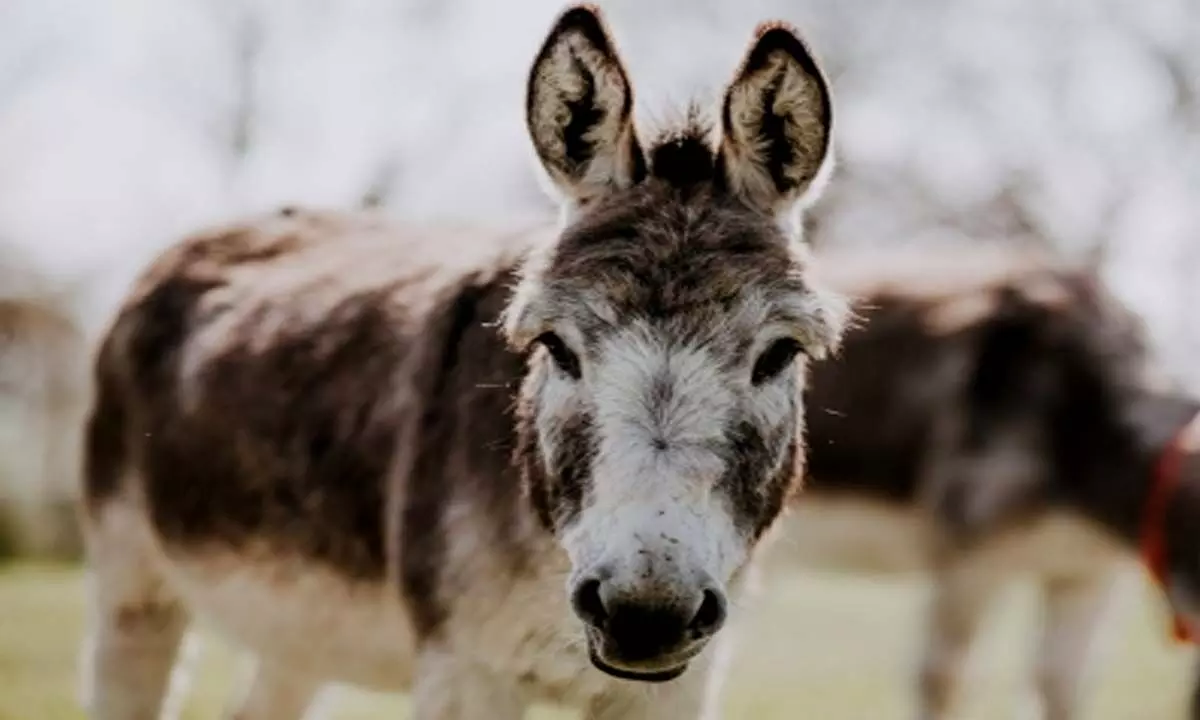Pakistan's Economic Survey reveals major increase in donkey population
Share :

Pakistan Economic Survey (PES) 2023-24 has revealed that the population of donkeys has seen a consistent and major rise during the current fiscal year with the number of donkeys in the country surging up to 5.9 million.
Islamabad: Pakistan Economic Survey (PES) 2023-24 has revealed that the population of donkeys has seen a consistent and major rise during the current fiscal year with the number of donkeys in the country surging up to 5.9 million.
Donkeys, known as the beasts of burden, seem to have maintained a consistency in their production, increasing by over 100,000 every year.
The total number of donkeys in Pakistan during 2019-20 was 5.5 million, reaching 5.6 million in 2020-21, 5.7 million in 2021-22, 5.8 million in 2022-23 and now standing at 5.9 million during 2023-24.
The details were revealed by Pakistan Finance Minister Muhammad Aurangzeb, who also revealed data on the population of other livestock that accounts for at least 60.84 per cent of the agricultural sector.
Aurangzeb revealed that the cattle population in the country increased to 57.5 million, sheep population to 32.7 million, goats to 87 million and buffalo to at least 46.3 million.
"This sector is a vital lifeline for families, contributing significantly to their livelihoods by accounting to around 35 per cent to 40 per cent of their total income," said the Finance Minister.
Pakistan's livestock economy constitutes at least 60.84 per cent of the agricultural sector and at least 14.6 per cent of the country's GDP holds pivotal value to the rural economy. Over eight million families in rural areas are deeply absorbed in livestock production.
The positive aspect of livestock production for Pakistan is that it grew by at least 3.70 per cent during the previous fiscal and has seen a positive increase of at least 3.89 per cent during 2023-24.
At a time when the country's economic indicators draw a picture of struggle and weak optimistic hopes of recovery, the livestock production sector has certainly solidified its position and stood out as the primary force behind the country's agricultural growth during the current fiscal year.
A positive impact has also been witnessed in the gross value addition of the livestock sector, rising from Rs 5587 billion during FY-2023 to Rs 5804 billion in FY-2024, growing positively at the rate of at least 3.9 per cent.
The population of donkeys works directly with the rural population of the country and its consistent increase also gives positive signals of growth in the agricultural sector and growth going forward.
The government of Pakistan has also given priority to the agricultural sector in terms of economic growth, poverty alleviation and food security by investing and focusing on its development.
"The government has formulated a strategy to provide the agriculture and specifically the livestock sector a supportive environment through a private sector-led development and policy interventions," maintained the Pakistan Economic Survey report.
"Regulatory measures have been implemented to enhance per unit animal productivity by improving veterinary health coverage, husbandry practices, animal breeding practices, assisted reproductive techniques (Embryo Transfer Technique, In Vitro Fertilisation, etc.), artificial insemination services, use of balanced ration for animal feeding, and controlling livestock diseases such as FMDE, PPR, LSD, and Avian Influenza”, the report read.













